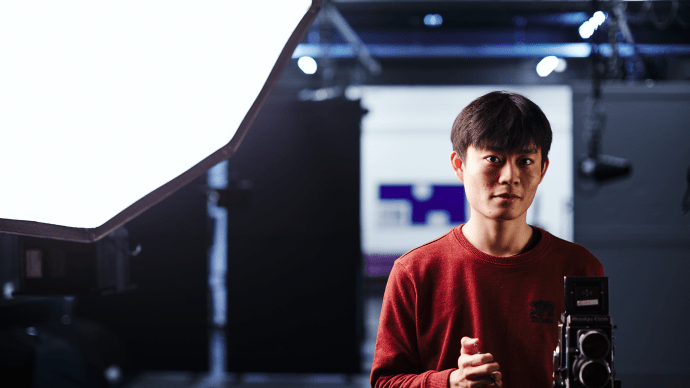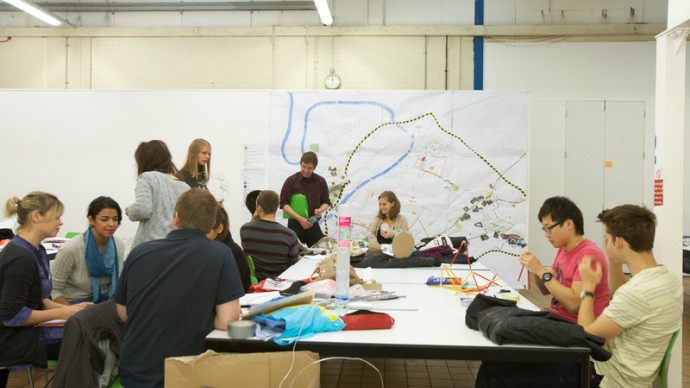Inclusive curriculum resources
Introduction
An Inclusive Curriculum involves and reflects the diversity of both society and the student body. There are different approaches to designing and delivering an Inclusive Curriculum, which the resources on this page are intended to support.
This toolkit is organised into four sections:
- Background and Research.
- The Inclusive Curriculum Toolkit section offers practical templates and guidance on making your curriculum more inclusive.
- In the Student Case Studies section, listen to BAME students talk about their experiences at university.
- The Good Inclusive Practice section contains good practice from staff across the university. Keep checking back - new videos will be added soon!

Background and research
-
What Do We Mean by ‘Being More Inclusive’?
There is no such thing as a single-issue struggle because we do not live single-issue lives
- Audre Lorde
In terms of this work, it is important to note that Manchester Met has the highest number of state school entrees in the UK and to be aware of our Access and Participation Plan (2020-2025) (staff only).
An Inclusive Curriculum involves and reflects the diversity of both society and the student body. There are different approaches to designing and delivering an Inclusive Curriculum, which the resources on this page are intended to support.
Some marginalized groups may include, but are not limited to, racialized students, LGBTQ+ students, students with a disability or a Specific Learning Difference (staff only) and those with caring responsibilities. It is also worth considering that these lived experiences are not lived as categories, but that we all have multiple facets to our identities and that as such individuals can be multiply marginalised and therefore also multiply privileged. One helpful model for thinking about the complexities of lived experience is ‘intersectionality’, a term that emerged from Black female scholarship, but that is primarily associated with the theorist Kimberelé Crenshaw (1989). Being open to having conversations with students about lived experience is another route to developing an Inclusive Curriculum.
Like Bhopal and Pitkin (2020) we use the term BAME ‘to refer to individuals from Black British, Black African, British Indian, Pakistani and Bangladeshi, Chinese and those from other non-White backgrounds, official terms used in the Census (2011). We are aware of the limitations of the term, particularly that BME individuals are not a homogenous group, but it remains a useful designation in a field such as higher education in which White identities remain dominant’ (544).
Kalwant Bhopal and Clare Pitkin (2020) ‘Same old story, just a different policy’: race and policy making in higher education in the UK, Race Ethnicity and Education, 23(4).
-
Why Make Our Curricula More Inclusive?
Recent statistics, gathered by AdvanceHE, show just how wonderfully diverse the HE student body has become. It is, therefore, more important than ever that we proactively work to make our curricula as inclusive and welcoming as possible so that we can get the best out of every student.
The diversity of the student body is captured in a variety of metrics, many of which have contested terms. For the purposes of this webpage, we will be using the terms which HESA and Advance HE, and consequently Manchester Met, uses.
The following data show just why we need to look at ways of making our curricula more diverse:
Age
In 2019/20, 48.2% students were classed as mature – aged over 21 years old on entry.
- Students aged 36 and over have the highest rates of disclosed disabilities of all groups at 15.8%.
- 90.5% of all part-time students were aged 22 and over.
Disability status
In 2019/20, 14.5% students have a disclosed disability – compared with 5.4% in 2003/04.
- 33.4% of students disclosed a specific learning disability, while 28.6% disclosed a mental health condition.
- Disability disclosure rates are highest among mixed race students at 20.1%, compared to 18.8% of white students.
Ethnicity
In 2019/20, there is a sector-wide awarding gap of 10.8% between Black, Asian and minority ethnic (BAME) students. 75.2% BAME students received a first/2:1 compared to 86% of white students.
- Within every ethnic group, the majority of UK home students were female. The gender difference was largest amongst UK Black students where 60.3% students were female.
- In every age group, a higher proportion of UK home white students received a first/2:1 than UK home BAME students.
Religion
In 2019/20, 43.8% of students in the HE sector reported having no religion. 27.6% reported Christian beliefs and 8.7% were Muslim.
- Jewish students had the highest rates of first/2:1 degree awards at 89%, whereas 73% of Muslim students received a first/2:1.
Trans status
Advance HE and HESA do not have complete data sets for disclosure of Trans status or sexual orientation in 2019/20, as it is currently voluntary information. 84.1% of institutions were able to return this data in 2019/20 concerning trans status. From this data set:
- 1.1% students indicated that their gender identity differed from that assigned at birth, compared to 0.6% in 2018/19.
Sexual orientation
88.2% of institutions were able to return this data in 2019/20 concerning data on sexual orientation. From this data set:
- 6.3% of students who disclosed their sexual orientation indicated an orientation other than heterosexual.
- Sexual orientation information was unknown for 24.9% of all students in HE.
The diversity of the student body at Manchester Met, and the wider HE-sector, is growing. This is something to celebrate and an opportunity to acknowledge the experiences and learning that students can bring in to our courses. The above also shows that we have a duty to address some of the intersectional challenges faced by our students too.
The following resources are designed to help you embrace the opportunities that diverse cohorts present to you as an educator.
Inclusive curriculum toolkit
-
Start Here
- Addressing Awarding Gaps - This links to the UTA Addressing Awarding Gaps Toolkit.
- Supporting Disabled Students Learning – Core Expectations - This document states the core expectations that students with disabilities can have from Manchester Met’s education provision.
- MMU Equality and Diversity Policy - This policy highlights the wider policies that influence our working environment and, therefore, our curricula.
- Inclusion and Disability Service Staff Intranet Pages - The Inclusion and Disability Service provides information, advice and guidance to staff, students and applicants who require additional support.
-
Resources for Programme Planning
The following documents can be used when reviewing programmes to help ascertain the ways in which you actively make your curriculum more inclusive for your students.
-
Resources for Teaching
- Inclusive Teaching Good Practice Checklists - This document presents a series of checklists that colleagues can use to find guidance on specific aspects of their teaching and learning. It offers a discussion of pertinent issues then offer a practicable checklist of steps you can take to work towards making your teaching as inclusive as possible.
- Report + Support - Manchester Met is committed to providing a safe and supportive campus environment. Please ask students to report using this link if they experience any form of discrimination or hate incident. This is not an emergency response system, if anyone is at immediate risk, call 999. If it is not an emergency but anyone needs support from campus security call 0161 247 2222 or use the Safe Zone App.
-
Other Inclusive Curriculum Resources
The following websites offer a range of helpful teaching and learning strategies and discussions to help you work towards making your curriculum as inclusive as possible. We’ve grouped these into two categories: resources to help you with your taught provision and resources to help you understand the need to us to make our curricula as inclusive as possible.
Making taught provision more inclusive
- British Dyslexia Association – Creating dyslexia friendly resources - This short guide will allow you to create learning resources (slides, handouts, etc) in the most accessible way for those with specific learning disabilities such as dyslexia and dyspraxia.
- Using the Office365 Accessibility Checker on Teaching Resources - This guide will show you how to quickly check the accessibility of your teaching resources using built-in Accessibility Checker.
- How Can I Be More Inclusive? A Guide from Plymouth University - A list of tips and advice videos for academic staff about fostering inclusive teaching and learning environments.
- De Montford University’s ‘Decolonising DMU Toolkit’ - This toolkit is a work in progress and elements will be released as they are created, including: examples of good practice, FAQs, narratives of staff experiences and a podcast series of discussions with colleagues and students.
Understanding the diversity of the HE student body
- AdvanceHE - Equality in Higher Education Annual Reports - These reports are published annually by Advance HE and, as well as giving a sector-wide picture, also provide insights into the data for specific disciplinary areas too.
- University College London - Why is my curriculum white? - A thought-provoking short film discussing the place of whiteness in the curriculum.
- The Anti-Racism Lab - The Canada Research Chair in Feminism and Intersectionality 7-year research project on decolonization and antiracism in universities.
- AdvanceHE – Creating an inclusive environment resources - Understand the common issues in further and higher education to design inclusive support services, develop accessible campus environments and make everyone feel welcome at your institution.
- AdvanceHE – Student recruitment, retention and attainment resources - Resources on equality and diversity considerations for academics and teaching staff as well as specific guidance on admissions, attainment and making adjustments.
- The University of Westminster ‘Pedagogies for Social Justice’ podcast series - This series features discussions on topics such as anti-racism and decolonisation as a means of exchanging and generating pedagogical practices and remedies.
- The Wellbeing of LGBTQ+ Students - TASO (Transforming Access and Student Outcomes in Higher Education) have published a report on the subjective wellbeing of LGBTQ+ students based on the analysis of data from the Student Academic Experiences Survey, a survey run by Advance HE and HEPI which is administered to more than 10,000 students each year.
Student case studies
My experience as a BAME Ambassador - Tomilola Adedewe
Tomilola Adedewe talks about her experience being a BAME Ambassador at Manchester Met. Tomilola originally presented this piece in the form of a presentation at Euro SoTL 2022.
Good inclusive practice
Good Inclusive Practice: Fiona Saunders on the Many Faces campaign
Professor Fiona Saunders talks about her implementation of the Many Faces campaign at Manchester Met, what went well and the challenges Fiona experienced. More information about the campaign can be found on the Many Faces Manchester Met webpage.Building inclusive learning communities

Building inclusive learning communities
This resource, created for Manchester Metropolitan University staff, offers a 20-minute overview of building inclusive learning communities, with a focus on students' diverse needs.Inclusive curriculum contact
Inclusive Curriculum contact
If you have further questions about creating an Inclusive Curriculum, or about any of the resources on this page, please contact Dr Chris Little. Click on the profile card for more details.

